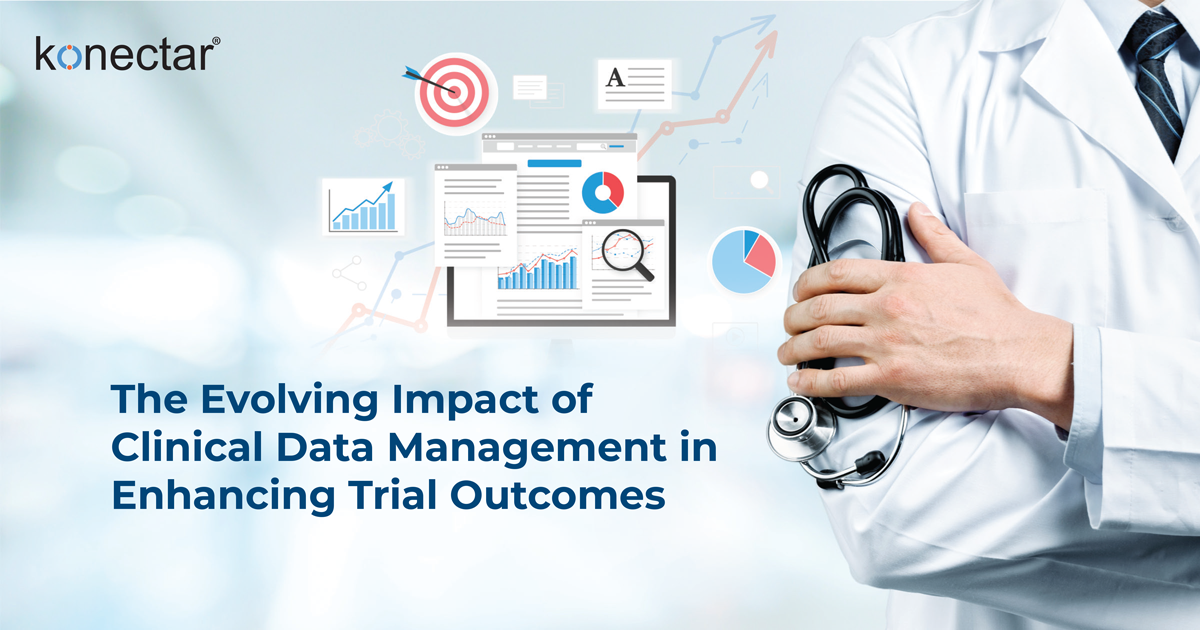Clinical Data Management (CDM) is a crucial aspect of clinical trials that aids in understanding the value of research data. This is especially true with the increasing long-term data archiving, sharing, and reuse trend. Transparent CDM ensures the reliability of data as those referring to the data afterward usually rely on study protocols to interpret the datasets and assess their quality.
Therefore, thorough documentation of study data and associated processes through CDM becomes essential to guarantee the reusability and proper interpretation of data over time.
The Current Landscape of Clinical Data Management
Over the past few years, there has been an exponential increase in Clinical Trials conducted worldwide. The traditional method of manually recording results on clipboards made way for precise data collection and management. The emergence of intelligent systems for data recording has transformed the clinical trials research process.
Clinical Data Management (CDM) today obtains data from a multitude of sources, such as Electronic Data Capture (EDC), Electronic Clinical Outcome Assessment (eCOA), central laboratory data, electrocardiograms (ECG), biosensors, wearable devices, and Electronic Health Records (EHRs). This diversified approach ensures participants' statistical data remains current and allows real-time information access.
Today, many Clinical Data Management Systems are available that facilitate intelligent management of data, leading data managers to navigate various tools. Trial sponsors are opting for centralized Data management, extending this approach to the technology they employ. This ensures uniformity and coherence across the board.
Simultaneously, smaller companies are increasingly outsourcing tasks to Functional Service Providers (FSPs). This strategic combination of implementing suitable software and partnering with an FSP cultivates an efficient and productive working environment. This has enabled life sciences companies engaged in clinical trials to document accurate data, reduce cost, shorten development time, and reduce research failures.
Interestingly, according to a study, the CDM systems market, which was valued at USD 2164.88 million, is slated to reach USD 6399.2 million by 2031. Further, the market is segmented based on Delivery and End-use. Delivery Mode comprises Licensed Enterprise Solutions, Cloud-based Solutions, and Web-hosted Solutions, whereas the End-Use segment involves Clinical Research Organizations (CROs), Medical Device Companies, and Pharma Companies.
Based on the delivery mode, it is estimated that cloud-based CDM systems will gain significant momentum due to their potential for low data loss, robust security, better management of data, and fewer regulatory compliance concerns. Based on the end-use mode, CROs are anticipated to rise faster. This is attributed to the fact that more and more companies will consider outsourcing their clinical trials to CROs as it results in lower drug development costs. Moreover, most CROs worldwide have employed Clinical Data Management to handle the vast volume of data.
Data Governance and Security in Clinical Trial Data Management
In clinical trials, Data Governance has a twofold role: protecting participant privacy and ensuring research accuracy. Striking this balance is crucial for upholding ethical standards and maintaining scientific credibility.
Collaborative structures involving diverse teams, such as researchers, data managers, IT specialists, and ethics committees, are instrumental in creating thorough data governance policies. These frameworks define specific roles, responsibilities, and procedures for managing, storing, sharing, and accessing data. Additionally, ensuring compliance with regulatory mandates, including data protection regulations and clinical trial standards, guarantees that data governance meets legal requirements.
Technological advancements, specifically the adoption of blockchain technology, have inherent features of immutability and transparency that offer a secure and tamper-resistant platform for storing and sharing data. This technology enhances data security by reducing the potential for unauthorized access and creating an audit trail for data transactions.
Emerging Technological Innovations
 Please enter description
Please enter description

Please enter description


Please enter description
